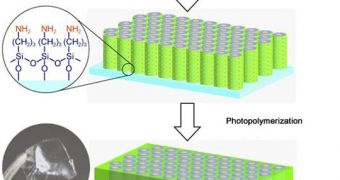Liquid salts are among the most promising materials in the world today, because research into their properties could unlock the secrets to building better lithium-ion batteries, fuel cells, organic cells and other novel applications. Tom Smith, a Rochester Institute of Technology (RIT) scientist is, for instance, working on a way of synthesizing liquid salts into a gel. His work was recently funded by an EAGER (EArly-concept Grants for Exploratory Research) grant from the US National Science Foundation (NSF). The grant encourages him to create an entirely new material.
According to the NSF document, Smith will attempt to create a polymer (or a plastic) from ionic liquid monomers. The new invention needs to have the ability to confine charge-carrying ions into a pseudo-liquid-gelled state, so the researcher has to figure out a way to bypass the loss of conductivity that occurs from tethering free-moving ions. He plans to accomplish this by placing the gelatinous, ionic liquid polymer inside nanoscale composite materials.
“There are some reports indicating that if you reduce the dimensionality of a system of ions, the conductivity goes up. We're talking 200 angstroms or 20 nanometers small – about 4,000 times smaller than the diameter of a human hair. How these polymer chains are distributed in the composite and how the ions associated with them move can be different,” Smith, who is an RIT professor of chemistry and microsystems, explains. He was recently selected as a member of the American Chemical Society's (ACS) inaugural class of fellows.
“I see [the new materials] being useful in capacitors for energy storage, and for better organic solar cells. Right now solar cells are made of silicon. They're relatively expensive. I see the possibility that these materials might be of use in those areas. We're going to explore that possibility,” the expert adds. “Room temperature ionic liquids that are stable in the air were first created in 1992, so they're fairly new. If you're dealing with liquids, you have to contain them. We'd like to have the properties of an ionic liquid in a state that's not liquid,” Smith says of the difficulties that lie ahead in his research.

 14 DAY TRIAL //
14 DAY TRIAL //